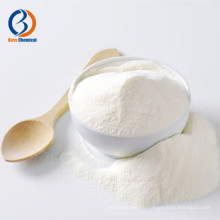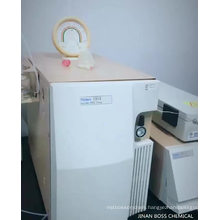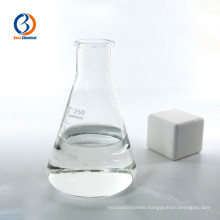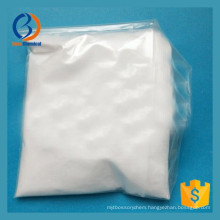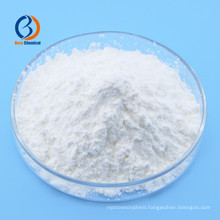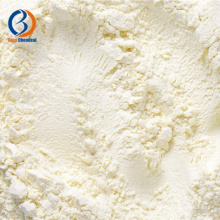UV-curing (UV-curing) inks have a fast drying speed, do not freeze when parking, save the work site, and have no volatile solvents. Due to these attractive advantages, UV-curing inks have gradually replaced conventional inks in recent years, and the proportion in the printing industry is increasing. However, we must also face up to the shortcomings of UV-curing inks, the most obvious of which is that UV-curable inks are difficult to store stably. For industrial applications, if the product does not have a certain shelf life, no matter how excellent its performance is not feasible, so this paper made a further study on this key issue. By examining various internal and external factors that affect the storage stability of the ink, the problem of stable storage of the UV-curable ink is successfully solved.
1 Experimental section
1.1 Raw materials and equipment
Raw materials Xin Qi 3# (epoxy acrylate), self-made; Polyester urethane acrylate (PUA), Shaanxi Jinling Light Curing Material Co., Ltd. products; various pigments, Shanghai Ciba products; N-vinyl pyrrolidone (NVP), UCB Belgium; Tripropylene glycol diacrylate (TPGDA), Trimethylolpropane triacrylate (TMPTA), all products of Tianjin Tianjiao Group; Thiophenyl-p-oxacyclopentane ( 907), bismethyl nitrogen-p-oxetane (369), TPO (2,4,6-trimethylformiphenylphosphine Oxide), all products of Shanghai Ciba Company; isopropylthiazole Anthrone (ITX), the first chemical company in the United States; inhibitors, are commercially available products. The main equipment Sg series 65 micro three-roll mill, Funing Chemical Machinery Factory.
1.2 Experimental Procedure
Ink preparation
According to the proportion of the formula, grind the grinded grout and other components of the system, such as active diluent, oligomer and various additives, quantitatively, stir well, and then add the monomer containing the photoinitiator, and stir well. That is formulated with the ink to be used.
Performance Testing
The prepared ink was placed in the designated environment and observed for gelation over a certain period of time. If so, the storage stability is not good; otherwise, it indicates that it can be stored stably under this condition.
2 Results and Discussion
Since most of the photoinitiators used in this experiment were solids, photoinitiators were required to be pre-dissolved in the monomers when formulating the ink and then added to the system. Since different monomers have different photoinitiator dissolving power, it is required that the selected monomers have good solubility to most photoinitiators. The commonly used monomers in the UV system are VP, TPGDA and TMPTA, and their solubility in photoinitiators is investigated as follows: Table 1 369 solubility in different monomers at 22°C g/100g Monomer VP TPGDA TMPTA Solubility 20 3 2 From Table 1, it can be seen that VP is much more soluble to photoinitiators than TPGDA and TMPTA. Therefore, VP is used to dissolve photoinitiators when inks are formulated. Unless otherwise specified, experiments were conducted under the assumption that other components and contents of the system were the same.
2.1 Influence of Photoinitiator
The experimental conditions were ambient temperature 30°C without addition of a polymerization inhibitor.
(I) Influence of the type of photoinitiator
The effect of different photoinitiators on storage stability was studied when the photoinitiator content was 6.7% and the VP content was 20%. Table 2 Effect of different photoinitiators on storage stability Photoinitiator 369 TPO 907 ITX Storage time 3 15 45 75
The results show that the use of different photoinitiators in the same ink with the same basic formulation has a great change in storage stability. This is because different photoinitiators have their own structures and properties, and this difference reflects its influence on the storage stability of inks in two aspects: First, the difference in molecular structure causes the UV absorption of photoinitiators to be different. The ability to decompose to generate free radicals is different under the conditions; second, the solubility of different photoinitiators in the monomers is different. Because the experiments were carried out under the same photoinitiator content and temperature, different photoinitiators dissolved in a certain amount of VP were different, some were unsaturated, and some were supersaturated. In the supersaturated state, the local concentration of the photoinitiator tends to be too high in the system, resulting in poor storage stability and short storage time. On the contrary, the storage time is long. Combining with the data in Table 2, it can be clearly seen that the effect of the photoinitiator on the storage stability of the ink corresponds to the solubility of the photoinitiator in the VP at the same temperature.
Table 3 Solubility of different photoinitiators in VP at 12°C g/100g Type 369 TPO 907 ITX Solubility 12.5 15 25 30
(b) Influence of photoinitiator content
When the content of VP was 20%, the photoinitiator was 369, and the effect of different content of photoinitiator on the storage stability of the ink was examined. Table 4 Effect of amount of 369 on storage stability Content of 369 % 1.1 3.3 5 6.7 8.9 Storage time /d >>180 >180 30 3 <1
The results show that when the content of photoinitiator is increased at a certain VP content, the storage life of the ink is reduced. When the content of VP is 20%, when the content of the photoinitiator in the system is less than 3.3%, the ink has a storage period of more than six months, and when the content exceeds 5%, the storage time of the ink is greatly reduced.
As the photoinitiator concentration increases, the concentration of active radicals produced per unit volume also increases, resulting in an increase in the rate of consumption of the polymerization inhibitor. When the concentration of active free radicals per unit volume exceeds a certain range, there are not enough inhibitors in the system to consume the active centers. These un-quenched active centers initiate the chain growth reaction to complete the polymerization, resulting in the ink curing. Therefore, the greater the amount of photoinitiator in the system, the shorter the ink can be stably stored.
